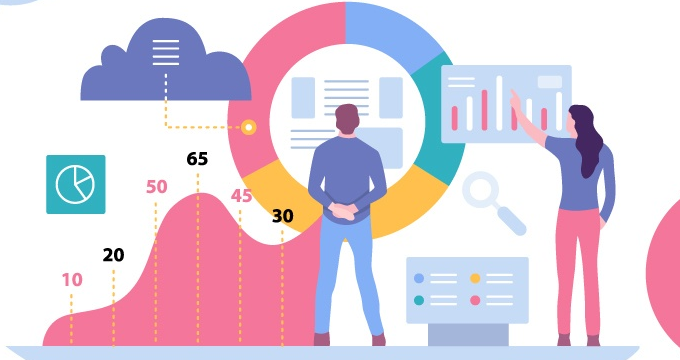The Use of Learning Analytics to Improve Student Outcomes

Introduction
You and me, we all want our students to succeed, whether it’s in school, college, or university. As educators, we strive to provide the best possible education for our students, but it’s not always easy to measure student success. That’s where learning analytics comes in – a powerful tool that helps us track student performance, identify areas of improvement, and tailor our teaching methods to meet their needs. In this article, we’ll explore The Use of Learning Analytics to Improve Student Outcomes and how it’s changing the face of education.
What are Learning Analytics?
So, what exactly are learning analytics? Simply put, learning analytics is the process of collecting and analyzing data about student learning, usually through digital platforms like learning management systems (LMS) and online learning tools. This data can include anything from student demographics and course enrollment to grades, assignments, and online activity. By analyzing this data, educators can gain valuable insights into student behavior, identify patterns and trends, and make data-driven decisions to improve student outcomes.
The Benefits of Learning Analytics
So, why should you care about learning analytics? Here are just a few reasons why The Use of Learning Analytics to Improve Student Outcomes is so important:
- Personalized learning: By analyzing student data, educators can tailor their teaching methods to meet the unique needs of each student.
- Early intervention: Learning analytics can help identify students who are struggling, allowing educators to intervene early and provide targeted support.
- Improved student engagement: By analyzing online activity and engagement, educators can identify areas where students are losing interest and adjust their teaching methods to keep them engaged.
- Better resource allocation: Learning analytics can help educators identify areas where resources are being wasted and allocate them more effectively.
The Use of Learning Analytics to Improve Student Outcomes: Case Studies
Let’s take a look at some real-life examples of The Use of Learning Analytics to Improve Student Outcomes:
- Predictive modeling: Researchers at the University of Michigan used predictive modeling to identify students at risk of dropping out. By analyzing student data, they were able to identify early warning signs and provide targeted support to those students.
- Personalized learning pathways: Educators at a high school in California used learning analytics to create personalized learning pathways for their students. By analyzing student data, they were able to identify areas where students needed extra support and provide tailored resources to help them succeed.
The Use of Learning Analytics to Improve Student Outcomes: Tools and Technologies
So, what tools and technologies are educators using to collect and analyze student data? Here are just a few examples:
- Learning management systems (LMS): LMS platforms like Canvas and Blackboard provide a wealth of data on student activity and engagement.
- Student information systems (SIS): SIS platforms like PowerSchool and Infinite Campus provide detailed information on student demographics and academic performance.
- Analytics platforms: Platforms like Tableau and Power BI provide advanced analytics capabilities to help educators make sense of their data.
The Use of Learning Analytics to Improve Student Outcomes: Challenges and Limitations
While learning analytics has the potential to transform education, there are also some challenges and limitations to consider:
- Data quality: Poor data quality can lead to inaccurate insights and ineffective interventions.
- Teacher buy-in: Educators may be resistant to using learning analytics, especially if they don’t see the value in it.
- Student privacy: There are concerns about student privacy and how data is being used.
The Use of Learning Analytics to Improve Student Outcomes: Best Practices
So, how can educators get the most out of learning analytics? Here are some best practices to consider:
- Start small: Begin with a small pilot project to test the waters and see what works.
- Collaborate with teachers: Work with teachers to develop a shared understanding of learning analytics and its benefits.
- Focus on student outcomes: Keep the focus on student outcomes and use data to drive decision-making.
The Use of Learning Analytics to Improve Student Outcomes: Future Directions
So, what’s the future of learning analytics? Here are some potential future directions:
- Artificial intelligence: AI has the potential to revolutionize learning analytics, enabling educators to analyze vast amounts of data and identify complex patterns.
- Mobile learning: Mobile learning platforms can provide new opportunities for collecting data on student learning and engagement.
- Open educational resources: Open educational resources can provide new opportunities for collaboration and data-sharing between educators.
Conclusion
The Use of Learning Analytics to Improve Student Outcomes is a game-changer for education. By collecting and analyzing data on student learning, educators can gain valuable insights into student behavior, identify areas of improvement, and tailor their teaching methods to meet the unique needs of each student. Whether you’re an educator, administrator, or simply interested in education, learning analytics is definitely worth paying attention to.